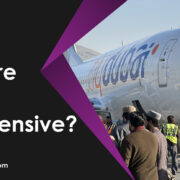Lobsters are best known as costly food items for seafood lovers. The lobster price has continuously grown over the last ten years due to the huge increase in demand, which is the reason why is lobster so expensive. So, if you want to pay for a lobster tail for your family dinner or get-together, you can visit local superstores. You can order these lobsters through online shopping stores as well.
I will tell you what it will be like when you purchase this luxury food item, and you will experience a huge price. That is why you will also think about why lobsters are so expensive when you go for a lobster purchase, whether you live near the ocean or miles away.
In this blog, I will tell you about the factors affecting the huge price hike of these food items. Why do these lobster prices limit the amount of cash in your wallet? We will also examine the science behind these lobsters’ huge price tags and rising prices based on locality, market demand, and season.
Table of Contents
What Affects the Cost of Expensive Lobster?
Many factors affect lobster’s cost, on the other side, it is also considered a poor man’s meal. In colonial New England, lobsters were considered abundant as they were found on the seaside, making it easy for them to catch by domestic people.
Moreover, as we go into the past, the continuous growth in the US population has caused an impact on the population of lobsters, which has started to decrease. It causes scarcity among the people, making it a demanded food item. Lobster fishing nowadays is a very difficult process.
According to the Insider Reports, such creatures or seafood items require proper preservation. Moreover, the growth is prolonged, as they rely on natural seafood and are defenseless against diseases. A significant step has been taken for the healthy growth of these lobsters, or they have been shipped across other countries alive.
Furthermore, many exclusive factors hugely impact the price tags, or, with time, Lobsters are in much demand during the local holidays. The latest reports show these prices have grown since Valentine’s Day.
Fishing Regulations and Sustainability Efforts
Fishing regulations and sustainability efforts play a crucial role in the pricing of lobsters. Strict fishing regulations, such as size limits and catch quotas, are imposed to prevent overfishing and ensure the lobster population remains healthy. These regulations often restrict the number of lobsters that can be harvested, which can reduce supply and drive prices up.
Sustainability efforts in lobster fishing focus on practices that minimize environmental impact and promote long-term viability. Methods like trap limits and protected breeding areas help maintain healthy lobster stocks. Sustainable fishing practices often involve higher costs, such as investments in gear modifications or compliance with stricter regulations, which can contribute to the overall expense of lobster.
Consumers increasingly value sustainably sourced seafood, prompting suppliers to adopt these practices despite the associated costs. As a result, while fishing regulations and sustainability efforts contribute to higher lobster prices, they also ensure the availability of this delicacy for future generations.”
The Role of Supply and Demand
The interplay of supply and demand significantly influences the pricing dynamics of lobsters. Seasonal fluctuations heavily influence lobster prices in supply. During peak seasons, such as late spring through early fall, when lobster populations are more abundant and accessible, prices tend to be lower due to higher supply.
Conversely, during off-seasons or adverse weather conditions that limit fishing activities, supply restrictions can lead to higher prices. On the other hand, demand for lobsters also plays a critical role. Lobster is often considered a premium seafood choice, particularly in fine dining and special occasions, which drives up demand. Increased demand during holidays or festive seasons can increase prices despite adequate supply.
Moreover, growing global demand for lobster, especially from emerging markets, further contributes to its pricing dynamics. Thus, the fluctuating balance between supply and demand is a key factor in why lobster remains a luxury item—the lobster with a high price that reflects its seasonal availability and consumer demand.
Cost Factors in Lobster Fishing
There are the following factors you can face when fishing lobsters:
- Equipment Costs: Modern lobster traps and specialized vessels seek significant upfront investment, increasing overall operation costs.
- Labor Intensity: Lobster fishing requires skilled crews working long hours under challenging conditions, which increases operational expenses.
- Regulatory Compliance: Fishermen must adhere to strict regulations governing catch limits, seasons, and gear specifications, which can add administrative and operational costs.
- Weather Impacts: Adverse weather conditions can disrupt fishing schedules, reduce catch rates, and increase operational costs due to extended time at sea and potential damage to equipment.
- Market Demand: High consumer demand, particularly during peak seasons or holidays, drives prices up despite production costs, reflecting lobster’s status as a premium seafood choice.
These factors collectively contribute to lobster’s high cost, which is influenced by operational complexities and market dynamics.
Processing, Transportation, and Storage
The costs associated with processing, transportation, and storage significantly contribute to the overall expense of lobsters. Processing involves labor-intensive tasks such as sorting, grading, and packaging lobsters according to size and quality standards. Facilities equipped with specialized equipment and skilled workers ensure that lobsters are prepared for the market in optimal condition, adding to operational costs.
Transportation plays a crucial role in maintaining the freshness of live lobsters. Efficient logistics, including refrigerated trucks or air freight, must swiftly transport lobsters from fishing grounds to processing plants or directly to market, minimizing transit time and ensuring quality upon arrival.
Storage is another cost factor, especially for live lobsters awaiting distribution. Facilities with appropriate temperature controls and water systems maintain lobsters healthy before sale, impacting operational expenses.
These factors, combined with market demand and seasonal availability, contribute to the premium pricing of lobsters, reflecting why is lobster so expensive or the investment and care required throughout the supply chain to deliver high-quality seafood to consumers.
Market Variations and Seasonal Influences
Market variations and seasonal influences play pivotal roles in determining the price of lobsters. Supply fluctuations throughout the year, particularly during peak summer and early fall seasons, cause a major impact. When lobsters are more plentiful, it often leads to lower prices due to increased supply. Conversely, off-season shortages or adverse weather conditions that disrupt fishing can reduce supply, driving prices higher.
| Category | Lowest/Average Cost Per Pounds | Highest Cost Per Pounds |
| Live Lobster | $16.99 | $38.49 |
| Lobster Meat | $55 | $96.49 |
| Lobster Tail | $39.99 | $45 |
| Lobster Claws | $39.5 | $70 |
Consumer demand also heavily influences pricing. Lobster is considered a premium seafood choice, with heightened demand during holidays and special occasions amplifying prices despite supply fluctuations. Global market dynamics, including export demands and economic factors, further contribute to price variability.
Seasonal factors such as molting cycles, which affect lobster quality and availability, also impact pricing. Moreover, regional variations in lobster fisheries and regulations can influence market dynamics and pricing trends. Overall, the complex balance between supply, demand, and seasonal influences shapes the market price of lobsters. At the same time, it reflects both the delicacy’s appeal and the complexities of its production and distribution.
Culinary Reputation and Dining Experience
The culinary reputation and dining experience associated with lobster significantly contribute to its premium pricing. Lobster has long been revered as a delicacy in various global cuisines, symbolizing luxury and satisfaction. Its rich flavor, tender texture, and versatility in gourmet dishes elevate its status as a sought-after seafood choice.
Restaurants often feature lobster prominently on menus as a centerpiece dish for special occasions and fine dining experiences. There is a catering to selective consumers willing to pay a premium for quality and exclusivity. The perception of lobster as a gourmet ingredient enhances its market value, driving demand among food enthusiasts and tourists seeking memorable dining experiences.
Additionally, the labor-intensive preparation required to serve lobster at its best, from careful handling to precise cooking techniques, contributes to its higher cost in restaurant settings. Overall, the culinary prestige, dining ambiance, and meticulous care in serving lobster underscores its reputation as a luxury item, influencing its market price accordingly.
How to Get the Best Price for Live Lobsters
To secure the best price for live lobsters, consider these strategies:
- Seasonal Timing: Purchase lobsters during peak seasons, typically in the summer and early fall, when supply is higher, and prices may be lower due to abundance.
- Direct from Fishermen: Buying directly from fishermen or local seafood markets can sometimes offer better prices than retail outlets or restaurants.
- Wholesale Options: Look into wholesale seafood suppliers or bulk buying opportunities, which may provide discounts for larger quantities.
- Comparison Shopping: Check prices at multiple seafood vendors or online suppliers to compare rates and find competitive deals.
- Special Offers and Sales: Watch for promotional events or seasonal sales, especially around holidays or seafood festivals, when prices may drop temporarily.
- Negotiation: Inquire about discounts for bulk purchases or ask if any current specials are available.
- Local Sourcing: Consider sourcing lobsters from local fisheries or markets, which may offer fresher products at better prices than imported options.
By leveraging these strategies and staying informed about market trends, you can optimize your chances of getting the best price. Moreover, you can enjoy high-quality live lobsters.
Conclusion
Understanding why is lobster so expensive requires looking at multiple factors driving its cost. Lobster fishing is labor-intensive and requires skilled fishers who often work in dangerous conditions. Strict regulations are in place to ensure sustainability, limiting the number of lobsters that can be harvested.
Lobsters cannot be farmed like other seafood, meaning their supply depends entirely on wild catches. This limited supply meets high demand, especially in gourmet dining and luxury markets, further elevating prices. Seasonal availability also impacts the supply, with certain times of the year seeing fewer lobsters.
Transportation and storage costs for keeping lobsters alive and fresh add another layer of expense. All these elements combined explain why lobster remains a pricey delicacy. Despite its cost, lobster continues to be a popular choice for special occasions and gourmet dishes, symbolizing luxury and satisfaction.








Comments